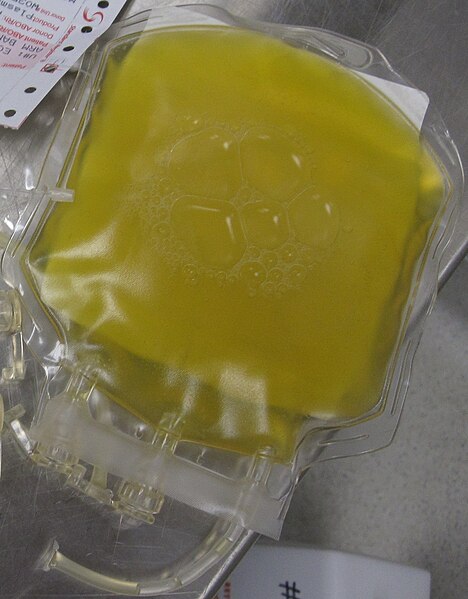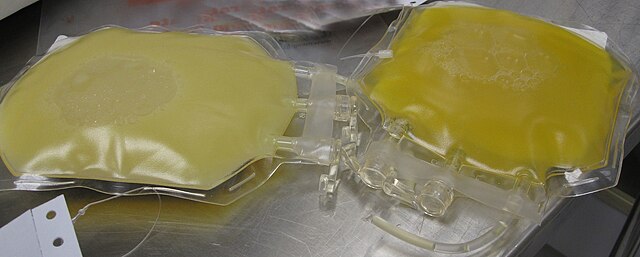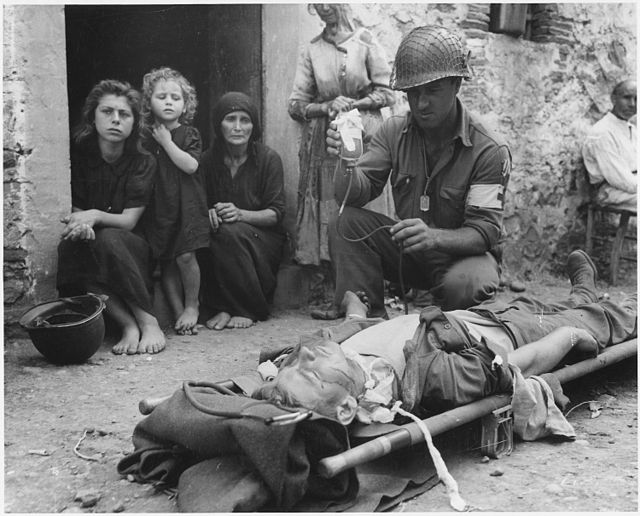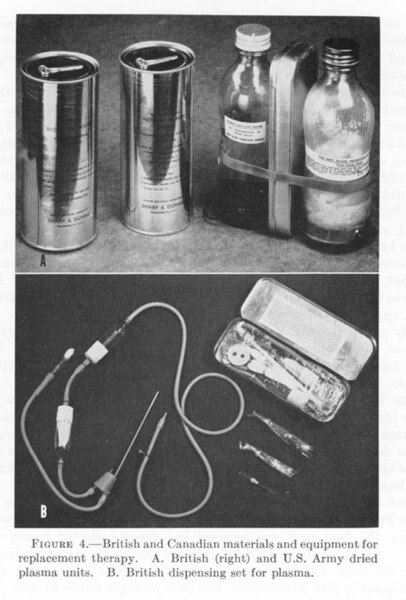Transferrins are glycoproteins found in vertebrates which bind and consequently mediate the transport of iron (Fe) through blood plasma. They are produced in the liver and contain binding sites for two Fe3+ ions. Human transferrin is encoded by the TF gene and produced as a 76 kDa glycoprotein.
Transferrin bound to its receptor.
Transferrin receptor complex.
Blood plasma is a light amber-colored liquid component of blood in which blood cells are absent, but which contains proteins and other constituents of whole blood in suspension. It makes up about 55% of the body's total blood volume. It is the intravascular part of extracellular fluid. It is mostly water, and contains important dissolved proteins, glucose, clotting factors, electrolytes, hormones, carbon dioxide, and oxygen. It plays a vital role in an intravascular osmotic effect that keeps electrolyte concentration balanced and protects the body from infection and other blood-related disorders.
A unit of donated fresh plasma
Bags of frozen plasma, from a person with hypercholesterolemia (left) and typical plasma (right)
Private Roy W. Humphrey is being given blood plasma after he was wounded by shrapnel in Sicily in August 1943.
Dried plasma packages used by the British and US militaries during WWII.






